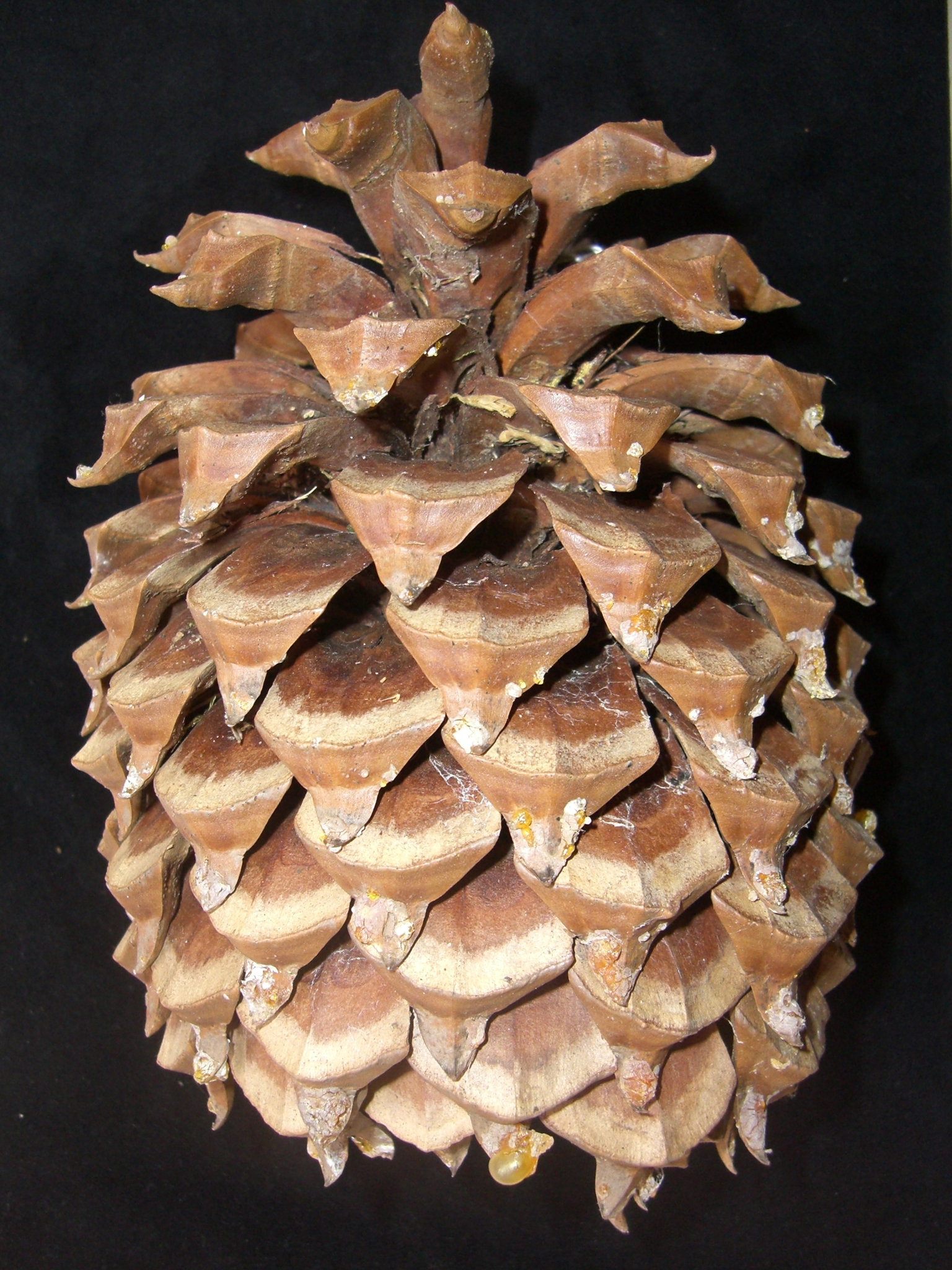
A broad-crowned tree growing to about 25 m tall. Bark deeply-fissured black-brown, scaly. Branches horizontal, curving upwards at the tips. Buds 2-4 cm long, pointed, fringed, resinous. Young shoots thick, ridged, waxy blue. Leaves in 3's, 18-32 cm long, thick, dark blue-green, held stiffly; sheaths persistent about 3-4 cm long. Cones massive, 20-35 cm long and weighing up to 3 kg, oblong-conic, yellow-brown; scales with a large curved hook on the tip. Seeds 1 cm long, shorter than their 1.5-2 cm long wings.
Grows naturally on dry slopes and ridges of the coastal ranges of California in altitude range 1000-2000 m in mixed evergreen and coniferous forest.
North America (California)
Thick young shoots; massive cones (they are the largest but not the longest of any species in the family), yellow-brown at first with hooked spurs on scales; wings on seed longer than the seed itself; cf. P. sabiniana) and P. jeffreyi.
NSW: Ournie (Jephcott Arboretum). ACT: Westbourne Woods (near Banks St). VIC: Beechworth (Queen Victoria Park); Daylesford (Bot. Gds); Dandenongs (Mt Dandenong Arboretum, 25 m tall in 1980); Heywood (Lake Condah Mission); Maldon (Woodbrook School, c. 1 km down Woodbrook Rd off Maldon-Bendigo Rd. Tree known locally as the Sandy Pine and said to be well over 100 years old). TAS: Hobart (Queens Domain near swimming pool).
Source: (1995). Pinaceae. In: . Horticultural Flora of South-eastern Australia. Volume 1, Ferns, conifers & their allies. The identification of garden and cultivated plants. University of New South Wales Press.
